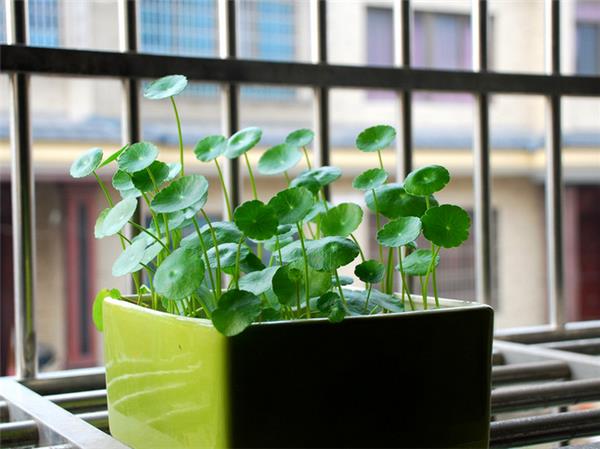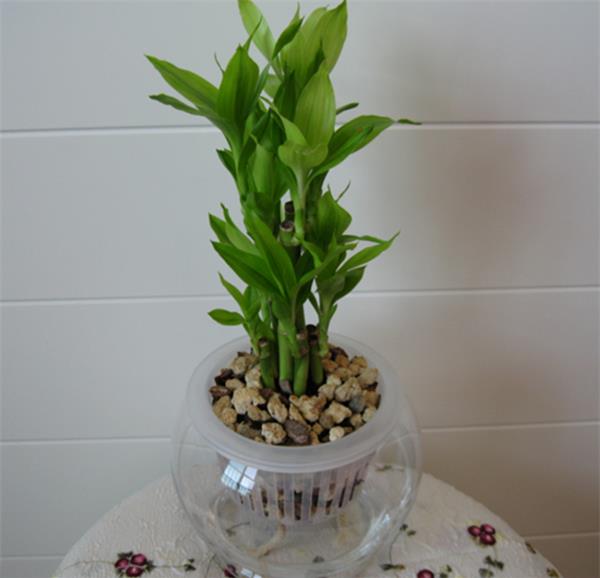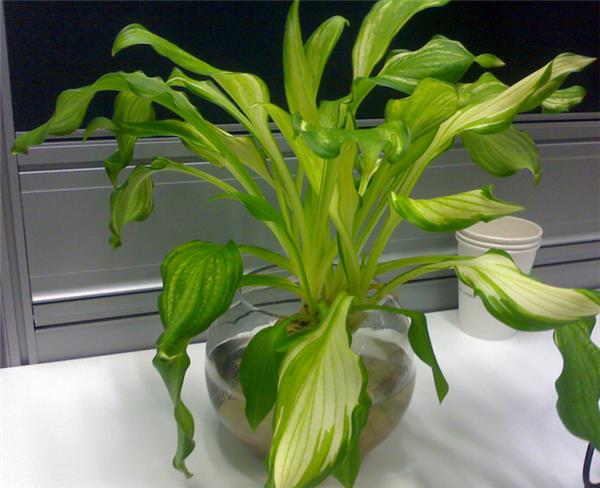How to grow flowers in water
How to grow flowers in water? In fact, the daily maintenance of growing flowers by water is quite simple, which is more worry-saving and labor-saving than that of growing flowers in soil, but because many people are still in new contact with the interesting way of growing flowers in water, they are inevitably a little uncertain about the maintenance of hydroponic plants. I think it's more mysterious. now let's talk about the conservation and management methods of hydroponic plants.

How to grow flowers in water
I. temperature
The suitable growth temperature of hydroponic plants is above 5 degrees above zero and below 30 degrees. In other words, as long as people feel more comfortable temperature, plants will feel very comfortable, they can grow normally, even in winter, can also flourish, add vitality for us.
Second, light
Mainly scattered light. What is scattered light? It is the natural light that comes in from windows and other places, which is naturally scattered indoors. General plant growth as long as there is a proper light on the line, do not have to be exposed to the sun, in summer, but also try to avoid direct sunlight.
3. Nutrient solution
In general, we can use the special nutrient solution sold on the market, according to the instructions to match the appropriate concentration, such as dilution 400x or 1000 times, the proportion must not be mistaken. When preparing, the tap water should be placed for two hours to half a day, and after its temperature is close to room temperature and the chlorine in the water is volatilized, the concentrated nutrient solution can be added in proportion to become a nutrient solution that can raise hydroponic plants.

IV. Change of water
Water exchange refers to the replacement of water with nutrient solution added to the bottle. In general, the water is changed once in 5-10 days in spring and autumn, once in about 5 days in summer, and once in 10-15 days in winter (after the tap water is placed for half a day, the concentrated nutrient solution is added proportionally).
The purpose of changing water is to ensure the oxygen supply in the water. Fresh water contains more oxygen, and plants will grow healthier. If you don't change water for a long time, plants can persist for a period of time. For example, sometimes people go on business trips or go on vacation. If they are not at home for ten days and a half months or even a month, the soil-cultivated plants can't stand it for a long time and die out, while hydroponic plants can persist as long as you add more water. But if the time is too long, the water in the bottle is not fresh or deteriorated, it will affect the growth of hydroponic plants, and in serious cases, it will also cause its death.
Note: when changing water, please expose half or 1/3 of the plant's roots.
5. Cleaning
Each time you change water, rinse the roots and containers of plants with clean water, trim withered branches, fallen leaves and rotten roots. Under normal growth conditions, hydroponic plants will regularly rot part of the roots and grow new roots, so when you find rotten roots, don't panic, just use sterilized scissors (sterilized with alcohol cotton) to trim off the rotten roots, and sometimes some old roots can be trimmed off to promote the growth of new roots (note: under the guidance of professionals). But be careful not to hurt the aquatic roots, otherwise it will affect the growth of plants.
Hydroponic plant roots, above those white and tender roots are aquatic roots, some grow directly from the base of the stem, some grow from the main root, they are responsible for the absorption function of the plant, must not hurt them.

VI. Moisturizing
There is little moisture in the air in winter, especially in the north, where the room is very dry, which is disadvantageous to the growth of plants, so please spray foliage with clean water to maintain humidity, you can spray water twice a day.
Sterilization method
The nutrient solution will breed green algae in the presence of light, which not only affects the beauty of the works, but also hinders the growth of plants. The phenomenon of algae growth occurs in the containers made of hydroponic works or in the hydroponic induced seedbed. How to effectively solve this problem is also an important technical problem in hydroponic production. The breeding of bacteria and algae in the process of induction can be solved by electric field ultraviolet compound method. On the other hand, the breeding in the container is a headache, and the maintenance and control method can only be used, that is, to change the water frequently, and it is best to replace it with pure water or cold boiled water for household drinking. This kind of algae and bacteria have a small base, which is also conducive to control. It can also spray a layer of transparent photocatalyst on the inner wall of the glass container, and it also has a certain anti-algal and bacteriostatic effect. Its photocatalysis can decompose root exudates and play a certain role in preventing rotting roots. Acetic acid, ethanol, acetaldehyde and ethylene secreted by roots can be catalyzed by photocatalyst to decompose into carbon dioxide and water. It can also be suppressed by placing strong magnetic or tourmaline at the bottom of the container. In addition, in addition to the electric field ultraviolet compound treatment mentioned above, the ultraviolet excitation sterilization and algae killing technology of photocatalyst filter can also be used in production. This method has also been widely used in hydroponic production abroad and achieved good results.

Matters needing attention in growing flowers in water
(1) when preparing hydroponic nutrient solution, do not use metal containers, let alone use it to store nutrient solution, it is best to use glass, enamel and ceramic utensils.
(2) if tap water is used in the preparation of hydroponic nutrient solution, tap water should be treated, because tap water mostly contains chlorides and sulfides, which are harmful to plants, and some bicarbonates also hinder the absorption of iron by roots. Therefore, when using tap water to prepare nutrient solution, a small amount of sodium ethylenediamine tetraacetate or humic acid salt should be added to treat chloride and sulfide in the water. If the matrix of water flower cultivation technology is peat, the above shortcomings can be eliminated. If the quality of groundwater is poor, it can be prepared with pollution-free river or lake water.
(3) in general, the cultivation water in the basin should be changed once in a month or two, just use tap water, but pay attention to put the tap water for a period of time to keep the root temperature stable.
(4) most of the flowers cultivated in water are negative and neutral flowers which are suitable for indoor cultivation, and they have their own requirements for light. Negative flowers such as ferns, orchids, Araceae, should be moderately shaded; medium-sized flowers, such as turtle back bamboo, goose palm wood, poinsettia, etc. are not strict on light intensity, generally like plenty of sunshine, can also grow normally in shade. It is very important to ensure the temperature of normal growth of flowers, and the root system of flowers grows well in the range of 15-30 degrees.
(5) attention should be paid to distinguish the root color of flowers to judge whether they grow well or not. The whole root or root mouth with proper concentration of light and temperature nutrient solution is white. Please pay attention to forbid excessive nutrient solution and shorten the time interval of adding nutrient solution.
(6) in the process of growing flowers in water, if water droplets are found to exudate from the leaf tip, it is necessary to appropriately reduce the height of the water surface, make more roots exposed to the air and reduce the proportion of soaking in the water.
This method has also been widely used in hydroponic production abroad and achieved good results.

Matters needing attention in growing flowers in water
(1) when preparing hydroponic nutrient solution, do not use metal containers, let alone use it to store nutrient solution, it is best to use glass, enamel and ceramic utensils.
(2) if tap water is used in the preparation of hydroponic nutrient solution, tap water should be treated, because tap water mostly contains chlorides and sulfides, which are harmful to plants, and some bicarbonates also hinder the absorption of iron by roots. Therefore, when using tap water to prepare nutrient solution, a small amount of sodium ethylenediamine tetraacetate or humic acid salt should be added to treat chloride and sulfide in the water. If the matrix of water flower cultivation technology is peat, the above shortcomings can be eliminated. If the quality of groundwater is poor, it can be prepared with pollution-free river or lake water.
(3) in general, the cultivation water in the basin should be changed once in a month or two, just use tap water, but pay attention to put the tap water for a period of time to keep the root temperature stable.
(4) most of the flowers cultivated in water are negative and neutral flowers which are suitable for indoor cultivation, and they have their own requirements for light. Negative flowers such as ferns, orchids, Araceae, should be moderately shaded; medium-sized flowers, such as turtle back bamboo, goose palm wood, poinsettia, etc. are not strict on light intensity, generally like plenty of sunshine, can also grow normally in shade. It is very important to ensure the temperature of normal growth of flowers, and the root system of flowers grows well in the range of 15-30 degrees.
(5) attention should be paid to distinguish the root color of flowers to judge whether they grow well or not. The whole root or root mouth with proper concentration of light and temperature nutrient solution is white. Please pay attention to forbid excessive nutrient solution and shorten the time interval of adding nutrient solution.
(6) in the process of growing flowers in water, if water droplets are found to exudate from the leaf tip, it is necessary to appropriately reduce the height of the water surface, make more roots exposed to the air and reduce the proportion of soaking in the water.
Related
- Wuhan Hospital Iron Tree Blooming Result Was Instantly Frightened by the Gardener Master
- Which variety of camellia is the most fragrant and best? Which one do you like best?
- What is the small blue coat, the breeding methods and matters needing attention of the succulent plant
- Dormancy time and maintenance management of succulent plants during dormancy
- Minas succulent how to raise, Minas succulent plant pictures
- What are the varieties of winter succulent plants
- How to raise succulent plants in twelve rolls? let's take a look at some experience of breeding twelve rolls.
- Attention should be paid to water control for succulent plants during dormant period (winter and summer)
- Watering experience of twelve rolls of succulent plants
- Techniques for fertilizing succulent plants. An article will let you know how to fertilize succulent plants.



